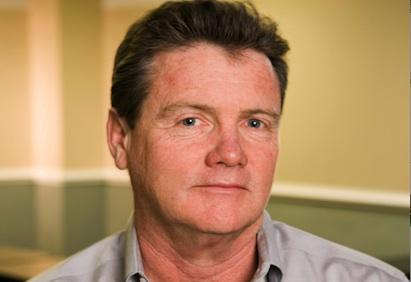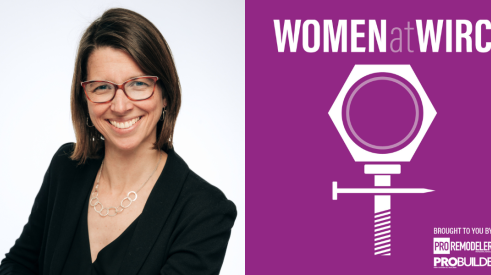Are you fit to grow?
As you begin to see a market uptick, or as you tire of being hunkered down, growth should be a priority for you. It has been said that if a business is not growing, it is dying. Over the past five years, growth has not been a common mindset. It has been survival of the fittest. Today, shifting out of a survival mode is imperative. If not, you risk seeing your business slip dramatically over the next year or two.
Growth is not a prescription; it’s a mindset. It has several definitions and permutations. Many aspects of growth go beyond the bottom line but likewise affect the financial health of the business. But the first question to ask: Is my company fit to grow?
There are many apt metaphors that may help us understand the nature of growth. For example, you may wake up tomorrow and decide you want to run a 10-kilometer race, but are you in shape enough so as not to hurt yourself or embarrass others? Do you have the time to get in shape for this run? Do you have the commitment from your family or others to support you? Do you have any idea of what a 10K run is like or the knowledge of what it takes? When you look in your closet do you see couch potato’s clothes or new running gear?
If you are physically fit, the transition to running a 10K race will be relatively easy. You may need to map out a plan, buy a few tools to monitor your pace, and carve out time for training. On the other hand, if you are 50 pounds overweight and inactive, your transition will be more difficult and require a different strategy. You may need to spend a month or two on weight loss, basic conditioning, and change some basic habits before you begin training.
Your business is very analogous. You need to first understand the language of business fitness. (My book “How Fit is Your Business” offers 10 criteria of business fitness.) Like our personal fitness, there are many aspects that need to work in sync with each other. These include financial elements: team, product excellence, etc. For example, strong legs without the right shoes may hinder you for a great 10K race.
Once you understand the elements of a fit business, you can begin to focus on positioning your business for growth. Here are a few keys to put growth strategies in place:
Create clients and projects will follow. This is the opposite of what most businesses do. Most businesses seek out a project, land it, then believe they’ve created a client. Adopt the opposite approach. If you work hard at creating a large enough client base, and you offer a product or service your clients need, then you can control your growth. With these elements, you can control when the phone rings rather than cross your fingers and hope you get calls for projects.
Exceed expectations. Are you consistently exceeding expectations with your clients, alliances, and team members? If not, then you may need to work on setting and fulfilling these expectations before you launch your growth moves. Exceeding expectations instills confidence. Confidence creates enthusiasm. And enthusiasm sells (and makes leadership buy-in effective). It is very difficult to grow and move forward without the momentum that others give the business.
Aggressive but realistic. The pace of growth often determines long-term success more than the idea or the quality of the product or service. More businesses crash and burn because they try to grow too fast than to grow too slow. Having a way to discuss and communicate pace is critical. Aggressive but realistic is a growth pace. You will not grow if you are not working hard, inching ahead of the competition, and taking a little risk (aggressive). At the same time you cannot ignore history: the numbers and the competency of your team (realistic). Your team needs to be asked the same question every day. If you are discussing a timeline, ask: Is it aggressive but realistic? If you are forecasting a revenue goal for new growth element, always ask: Is it aggressive but realistic?
Knowing that growth is an essential part of good business health, you first need to honestly ask: Are you fit to grow? PR
--
Mark Richardson, CR, is a member of the NAHB Remodeling Hall of Fame and a Fellow on the Remodeling Futures Steering Committee at Harvard University’s Joint Center for Housing Studies. Richardson is the author of the best-selling book, “How Fit is Your Business,” and a forthcoming book, “Fit to Grow,” to be published this fall.
As you begin to see a market uptick, or as you tire of being hunkered down, growth should be a priority for you. It has been said that if a business is not growing, it is dying. Over the past five years, growth has not been a common mindset. It has been survival of the fittest. Today, shifting out of a survival mode is imperative. If not, you risk seeing your business slip dramatically over the next year or two.
Add new comment
Related Stories
How to Create a World-Class Remodeling Team
Great remodeling companies position themselves for the future with the right players
Everyone Should Have a Number: KPIs for Your Design Build Team
Measuring key performance indicators guides your team to success while creating accountability and ownership
How to Revamp Your Pre-Construction Process
Experiencing too much slippage and delays? See how Bridget Bacon of Red House Design Build solved these issues by improving the remodeler's pre-construction process
How This Remodeler Revamped Their Pre-Construction Process
Bridget Bacon of Red House Design Build outlines how she helped transform the pre-construction process for improved finances and morale
Building A Small Projects Division from the Ground Up
Through hard work and careful strategy, Harth Home Services has seen big growth
A Mindset of Serving Others
A research study shows surprising results about what makes us take ownership of our work.
3 Keys to Successful Team Management
On this episode of Women at WIRC, hear Laura Burnes delve into her approach to leadership and project management, in addition to sharing insights into Adams + Beasley Associates' winning culture.
4 Steps to Prep Your Business for Contraction
How a remodeling company plans ahead for the worst of times (and the best of times)
Helping Remodelers 'Get Their House In Order'
From remodeler to NARI executive to industry consultant, Diane Welhouse uses her expertise to help business owners













